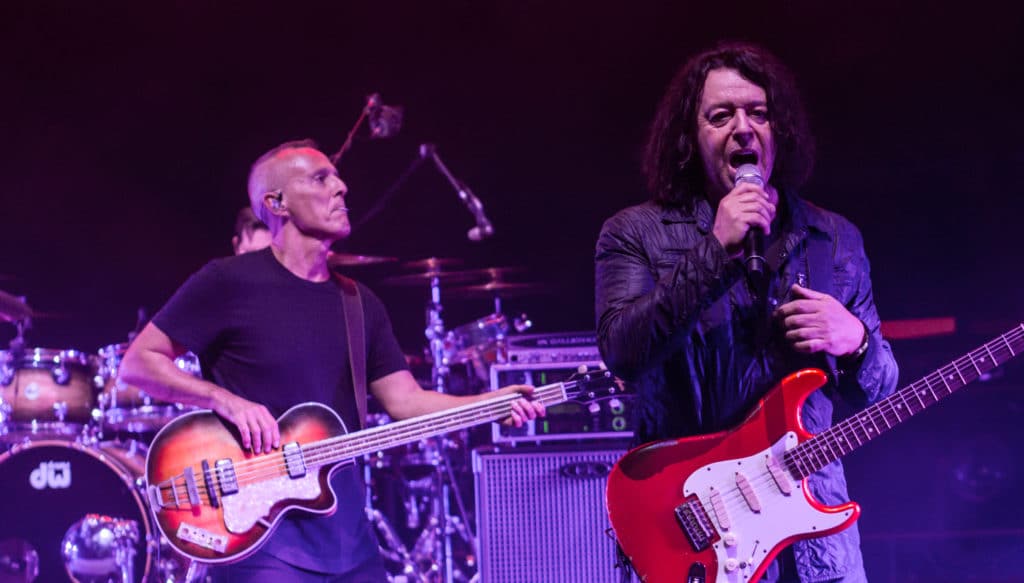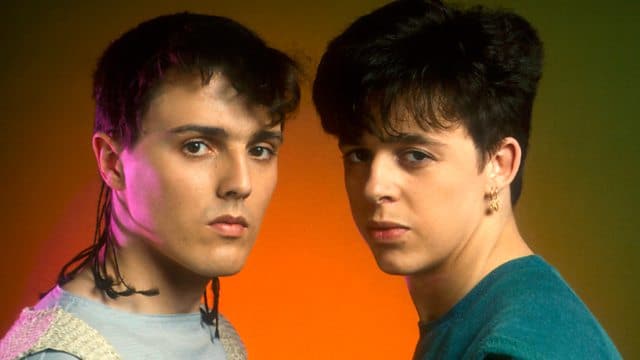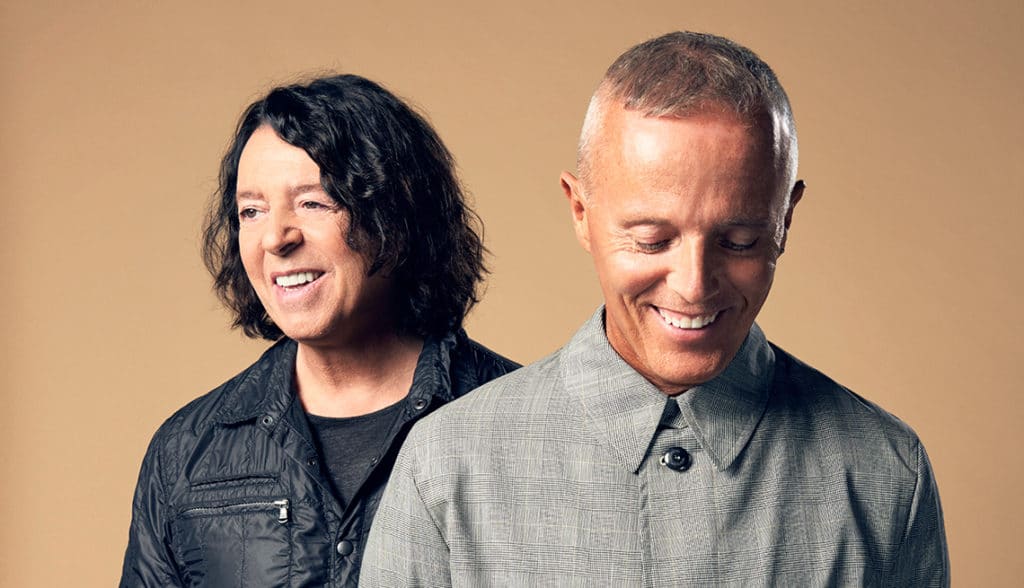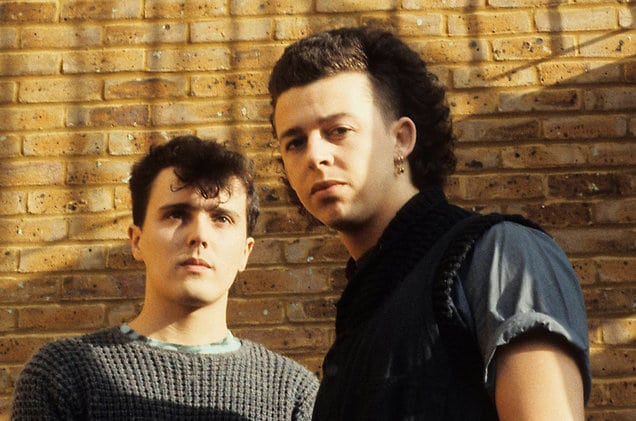The Tears for Fears collective is named after a phrase found in Arthur Janov's book Prisoners of Pain. This is a British pop rock band, which was created in 1981 in Bath (England).
The founding members are Roland Orzabal and Curt Smith. They have been friends since their early teens and started with the band Graduate.

The beginning of the musical career of Tears for Fears
This group belongs to one of the first synth groups of the early 1980s. An early work by Tears For Fears is the debut album The Hurting (1983). It is based on the emotional anxiety of youth. The album reached number 1 in the UK and contained three UK top 5 singles.
Orzabal and Smith had a major international "breakthrough" with their second album, Songs from the Big Chair (1985). It has sold over 10 million copies worldwide. And topped the US album charts for five weeks. The album peaked at number 2 in the UK and spent 6 months in the top 10.
Five singles from the album reached the UK Top 30, with Shout peaking at number 4. The most popular hit of the hit parade Everybody Wants to Rule the World took the 2nd position. Both singles peaked at number 1 on the US Billboard Hot 100.
After an extended break from the music industry, the band's third album was The Jed/Blues/The Beeds, which was influenced by The Seeds of Love (1989). The album featured American soul singer and pianist Oleta Adams, whom the duo discovered while playing in a hotel in Kansas during their 1985 tour.
The Seeds of Love became their second No. 1 album in the UK. After another world tour, Orzabal and Smith got into a big fight and went their separate ways.
Breakup of Tears for Fears
The breakup was caused by Orzabal's difficult but frustrating approach to composition. As well as Smith's desire to work in the jetset style. He began to appear less in the studio. They ended up spending the next decade working separately.

Orzabal retained the band's name. Working with long-term partner Alan Griffiths, he released the single Laid So Low (Tears Roll Down) (1992). It appeared on the Tears Roll Down compilation that year (Greatest Hits 82–92).
In 1993, Orzabal released the full-length album Elemental. The collection Raoul and Kings of Spain was released in 1995. Orzabal released the album Tomcats Screaming Outside in 2001.
Smith also released a solo album Soul on Board in 1993. But it went missing in the UK and was not released elsewhere. Finding a writing partner (Charlton Pettus) in the US, he released another album, Mayfield (1997).
In 2000, paperwork obligations led Roland Orzabal and Kurt Smith to speak for the first time in nearly a decade. They decided to work together again. 14 new songs were written and recorded. And in September 2004, the next album, Everybody Loves a Happy Ending, was released.
The song Head Over Heels, a Mad World cover by Gary Jules and Michael Andrews, appeared in the film Donnie Darko (2001). The Mad World (2003) version was released as a single and went to No. 1 in the UK.
And together again
Reunited, Tears For Fears toured all over the world. In April 2010, the musicians joined Spandau Ballet (7 tours) in Australia and New Zealand. And then - on a 4-headlining tour to Southeast Asia (Philippines, Singapore, Hong Kong and Taiwan). And on a 17-day US tour. The band then continued to perform annually with minor tours. In 2011 and 2012 the musicians gave concerts in the USA, Japan, South Korea, Manila and South America.

In May 2013, Smith confirmed that he was recording new material with Orzabal and Charlton Pettus. Then in the UK, at Orzabal's home studio Neptune's Kitchen, the musicians worked on 3–4 songs.
Further work on the new Tears For Fears album began in Los Angeles in July 2013. According to Orzabal, they produced the darker, more dramatic compositions that gave the album the name Tears for Fears: The Musical. “There is one track that combines Portishead and Queen. It’s just crazy!” Orzabal said.
For the 30th anniversary of the band's debut album The Hurting, Universal Music, they re-released it in two Deluxe Editions. One with 1983 discs and the other with 2013 discs and a DVD of the In In Mind's Eye (XNUMX) concert in October XNUMX.
In August 2013, the band released cover material from the band Arcade Fire Ready to Start available on SoundCloud.
In the summer of 2015, Orzabal and Smith hit the road with Daryl Hall and John Oates.
Five facts about Tears for Fears
1. Composition Mad World originated during Roland Orzabal's depression
The song Mad World, which contains the lines "Dreams in which I die are the best I have ever had," came out due to the longing and depression of Orzabal (songwriter).
“I was in my 40s and I forgot the last time I felt this way. I thought, “Thank God for 19-year-old Roland Orzabal. Thank God he is now depressed,” he told The Guardian in 2013.
In the same interview, Orzabal said that the name of the song appeared thanks to the group Dalek I Love You, that at the age of 18 he left school, "I did not even think that such moments in life could lead to a real hit."

2. Roland Orzabal's amazing dance moves in the Mad World video appeared in the recording studio
The video for Mad World remains memorable for many reasons. These are haircuts, chunky sweaters, beautiful and strange dance moves by Roland Orzabal. The band filmed the video and Roland dancing because he had nothing to do in the video while Kurt was singing.
Speaking with Quietus, David Bates said: “I wanted to make a video for this. In the recording studio, Roland created this dance when he was having fun. I've never seen anyone dance like this - weird and unique. Perfect for video, with the same weird plot of seeing the world from another window through the window. He performed this dance in the video, which became very popular.”
3. The name of the group and much of the music "revolve" around "primary therapy"
Primal Therapy was so popular in the 1970s and 1980s that Tears For Fears took its name from a popular method of psychotherapy. Orzabal and Smith lived through childhood traumas and experiences.
"My father was a monster," Orzabal told People magazine in 1985. “My brothers and I lay at night in our room and cried. Since then, I have always distrusted men." The guitar teacher introduced Orzabal to the Primal Shout course and its practices, which included therapy. In it, patients recalled repressed memories, overcame them through deep grief and crying.
The duo met with Yanov, who offered to write a play based on primal therapy.
“I did primal therapy after Songs from the Big Chair and during The Seeds of Love, and then I realized that a lot of us are characters. And you need to understand that you were born the way you are, ”said Orzabal.
“I think that any trauma (whether in childhood or later in life) negatively affects us, especially when you are depressed, but there are so many of us in this world. I believe that the original theory that has been introduced into modern psychotherapeutic practice is very, very correct, but a good therapist also plays a role, a significant role even. And he doesn't have to be a primary therapist."
4. The third album The Seeds of Love "broke" the group ... almost
After the success of Songs from the Big Chair, the band waited four years to release a follow-up to The Seeds of Love (1989). The duo wanted to create a grand career-defining artistic statement, namely to make a musical masterpiece.
With The Seeds of Love, the band decided to change their sound, combining 1960s psychedelic rock and The Beatles with other elements.
The album went to several producers, the recording costs were significant. As a result, the musicians created The Seeds of Love. But it also cost the group Tears for Fears their split-artist status. Orzabal continued to record solo, releasing Elemental and Raoul (1993) and Kings of Spain (1995). It wasn't until 2004 that the duo recorded the album Everybody Loves a Happy Ending together again.
5. Roland Orzabal - Published Novelist
Orzabal released his debut novel Sex, Drugs and Opera: Life After Rock and Roll (2014). The comedy book is about a retired pop star who entered a reality TV contest to win back his wife. The book is not autobiographical.



